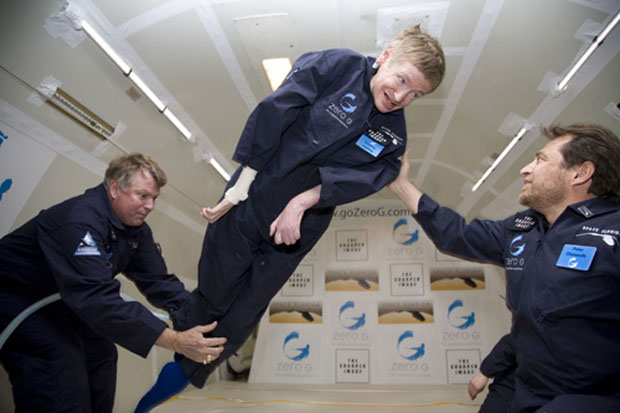Do We Dare Let Aliens Know We're Here?

SANTA CLARA, Calif. -- Even if humanity could reach out to an intelligent alien civilization, scientists are polarized over whether we should.
Famed astrophysicist Stephen Hawking has argued that the extraterrestrials we contacted would be likely to harm us, a view that divided the experts here at the SETIcon convention.
"No one can say that there is no risk to transmitting," John Billingham, former chairman of the SETI (Search for Extraterrestrial Intelligence) Committee of the International Academy of Astronautics, said via a statement read at the convention Sunday. "Personally, I agree with Hawking and think it may be unwise to transmit."
However, Douglas Vakoch, director of interstellar message composition at the SETI Institute, said of aliens: "Even if they tend to be hateful, awful folks, can they do us any harm at interstellar distances?"
Up to now, the efforts of SETI have concentrated on receiving and recognizing signals from non-natural sources in space.
Hawking, 68, claimed that any civilization with which humanity could communicate is likely to be much older and more technologically advanced than ours. So they would probably have the ability, and possibly the motive, to eradicate humanity and strip-mine our planet for parts. It would be safer not to actively broadcast our presence, he said.
Billingham said listening for signs of life is safe, but sending out signals of our own could be asking for trouble. He recommended establishing an international conference to decide whether the whole world supported "active SETI," or METI (Messaging to Extraterrestrial Intelligence).
Breaking space news, the latest updates on rocket launches, skywatching events and more!
Canadian science fiction author Robert Sawyer agreed that international opinion should be consulted before a small group of scientists made any "arrogant" choice on behalf of the planet.
"We've got to stop and think about this, whether this is a wise thing to do," Sawyer said.
But SETI Institute senior astronomer Seth Shostak said such a conference is unlikely to be productive. "The idea that we can solve this problem with international consultation strikes me as naivete of the first order," Shostak said.
He argued that the whole issue is moot because Earth has been radiating signals into space for decades.
Every radio and television broadcast in history has beamed out electromagnetic radiation to the cosmos -- an effect scientists refer to as leakage. While these signals haven't been particularly powerful or targeted to extraterrestrials, a sufficiently advanced civilization would have no trouble detecting them, Shostak said.
"This horse has left the barn," he said. "Any society that could possibly be a threat to us can easily know at least that we're here. There's no point in losing sleep over this."
Furthermore, he and other experts questioned the logic of an alien civilization wanting to attack Earth.
Vakoch said it would take quite a lot of time and energy for extraterrestrials to come all the way to Earth to wage war or try to extract resources from our planet. The cost of traveling here to collect them, not to mention transporting those resources back to the aliens' home, would far outweigh the benefit, he said. [The Strangest Extrasolar Planets]
Shostak agreed.
"It's completely analogous to ordering a book from Amazon and paying $60,000 for shipping," Shostak added.
- Gallery: The Strangest Alien Planets
- Ten Alien Encounters Debunked
- If Aliens Exist, They Will Probably Love Bach

Clara Moskowitz is a science and space writer who joined the Space.com team in 2008 and served as Assistant Managing Editor from 2011 to 2013. Clara has a bachelor's degree in astronomy and physics from Wesleyan University, and a graduate certificate in science writing from the University of California, Santa Cruz. She covers everything from astronomy to human spaceflight and once aced a NASTAR suborbital spaceflight training program for space missions. Clara is currently Associate Editor of Scientific American. To see her latest project is, follow Clara on Twitter.
